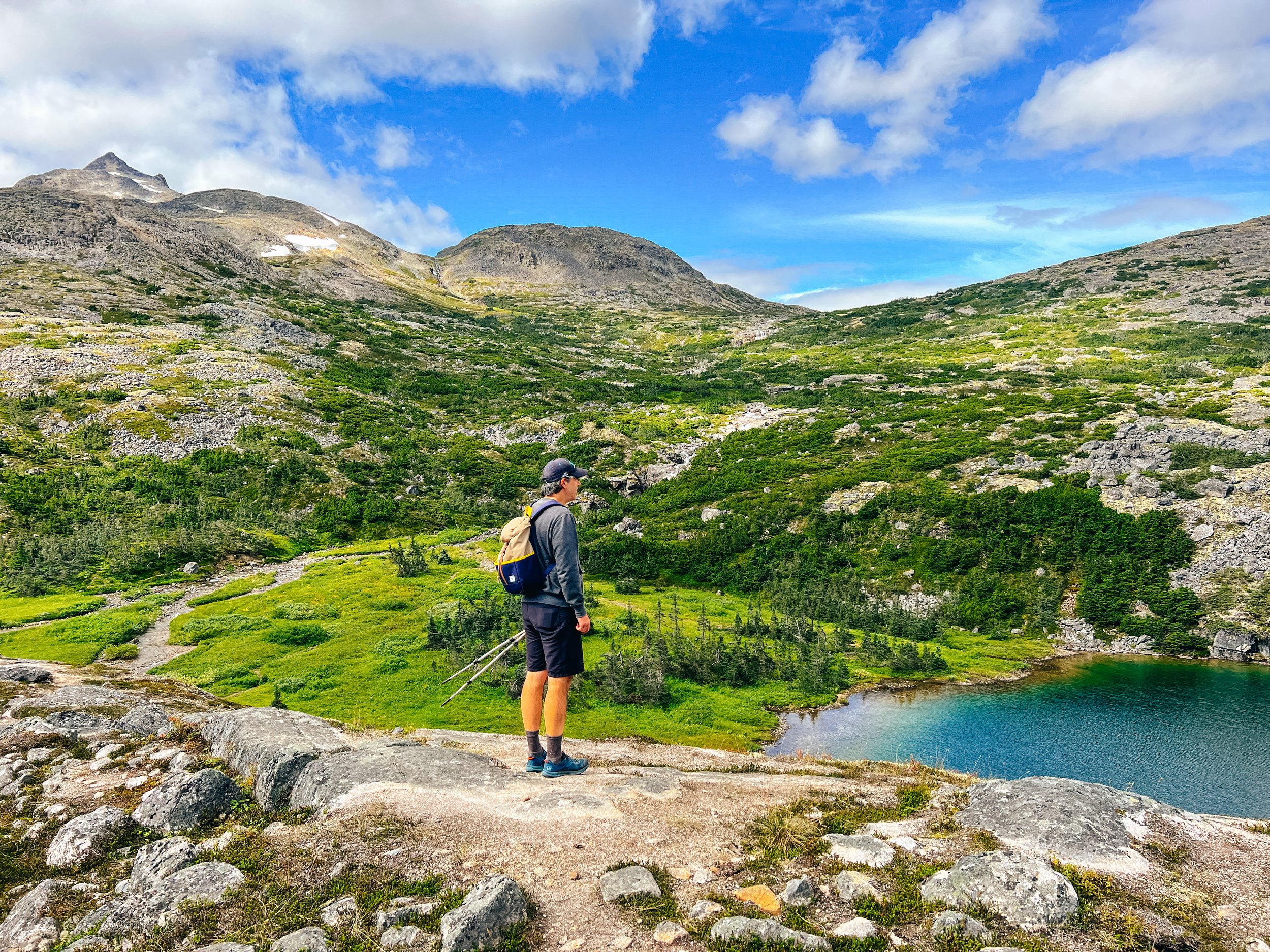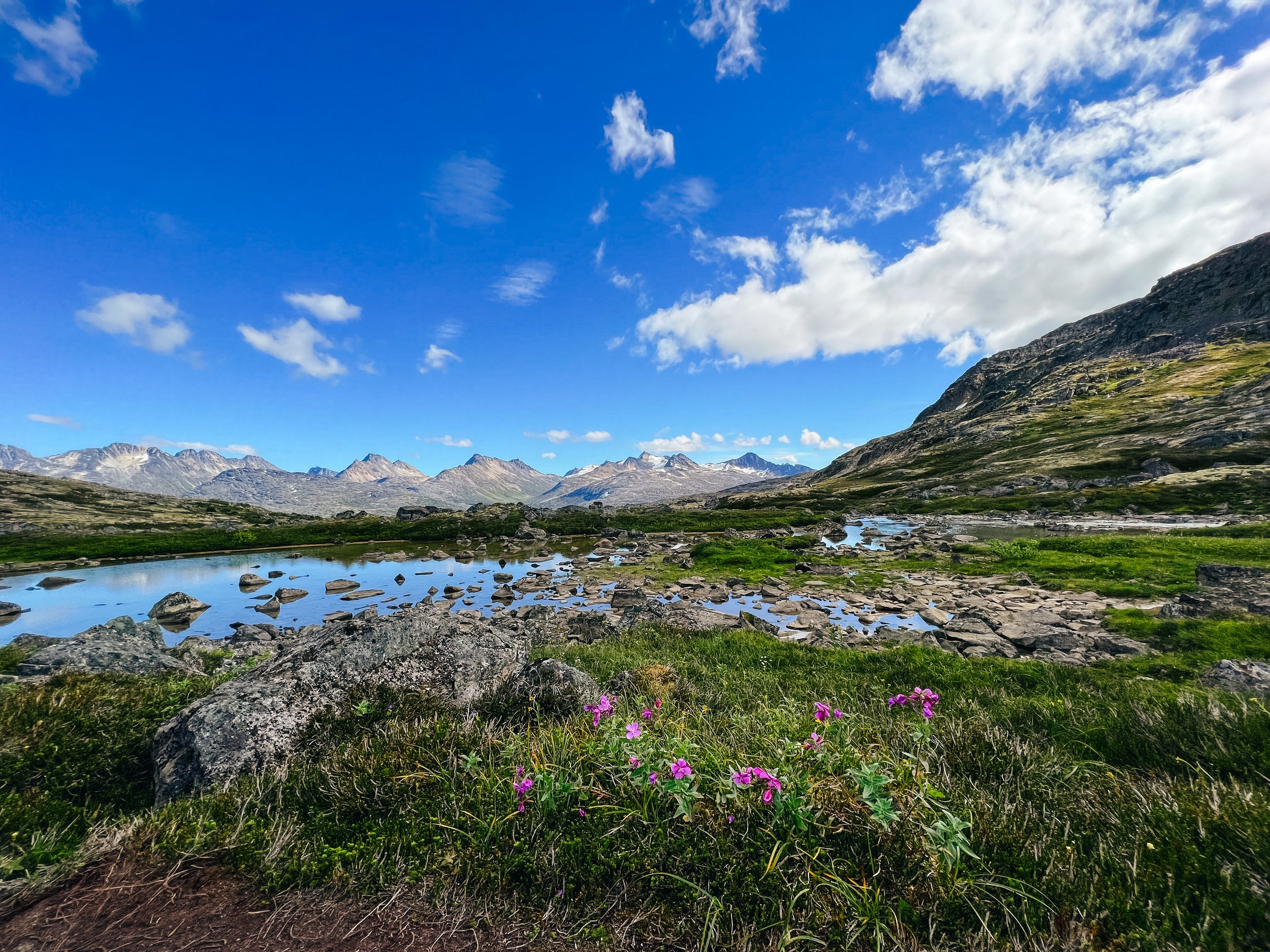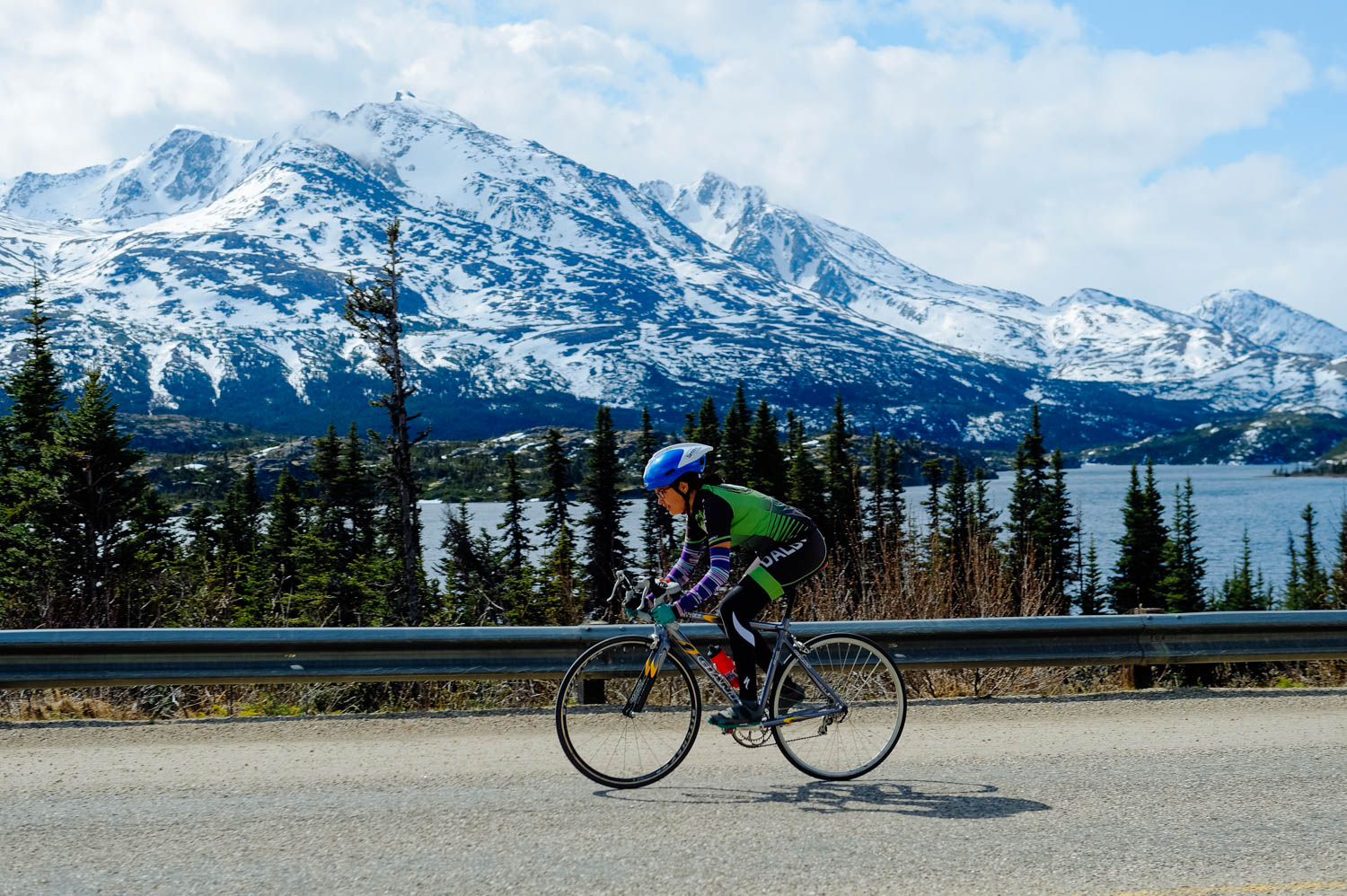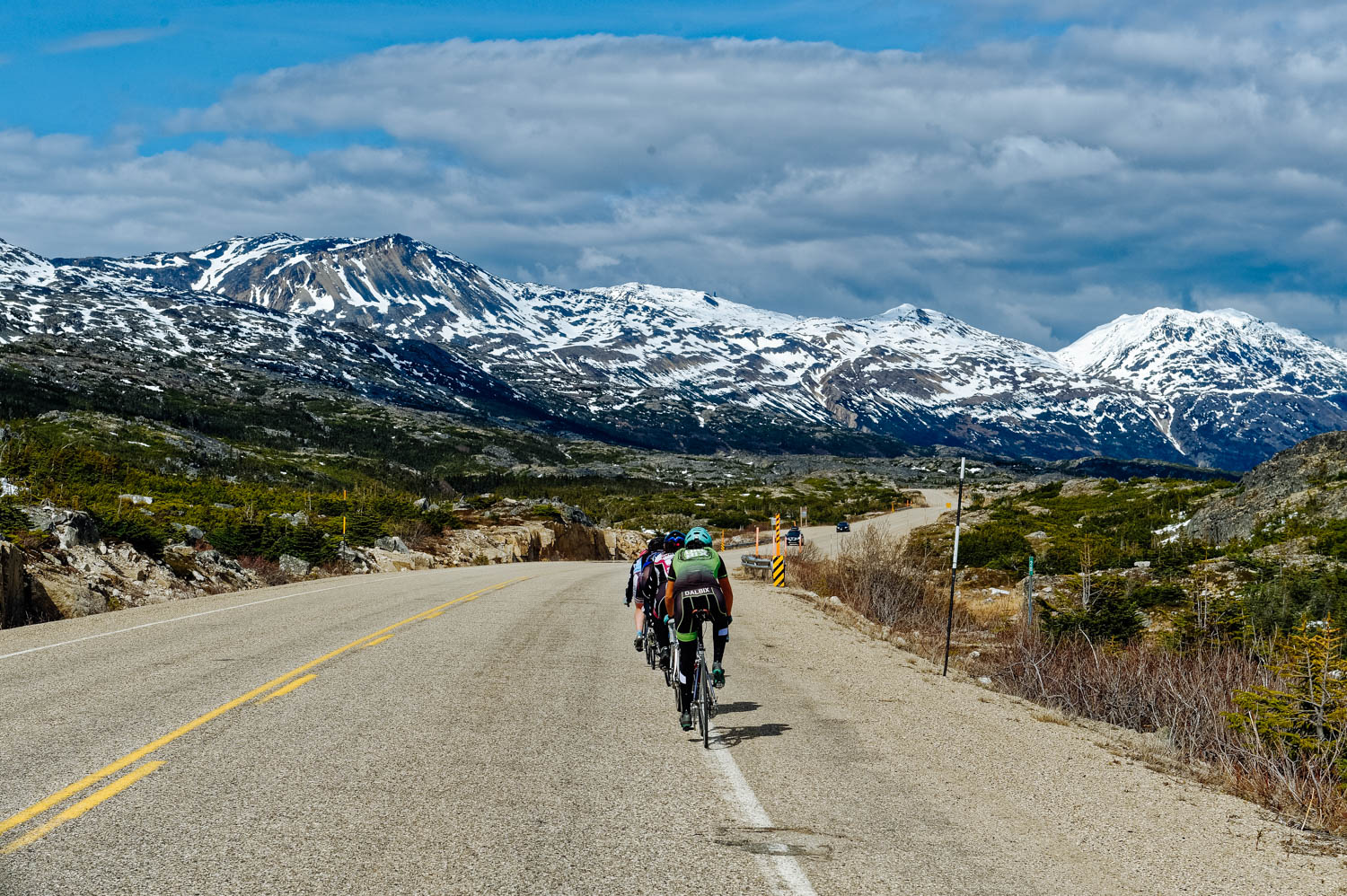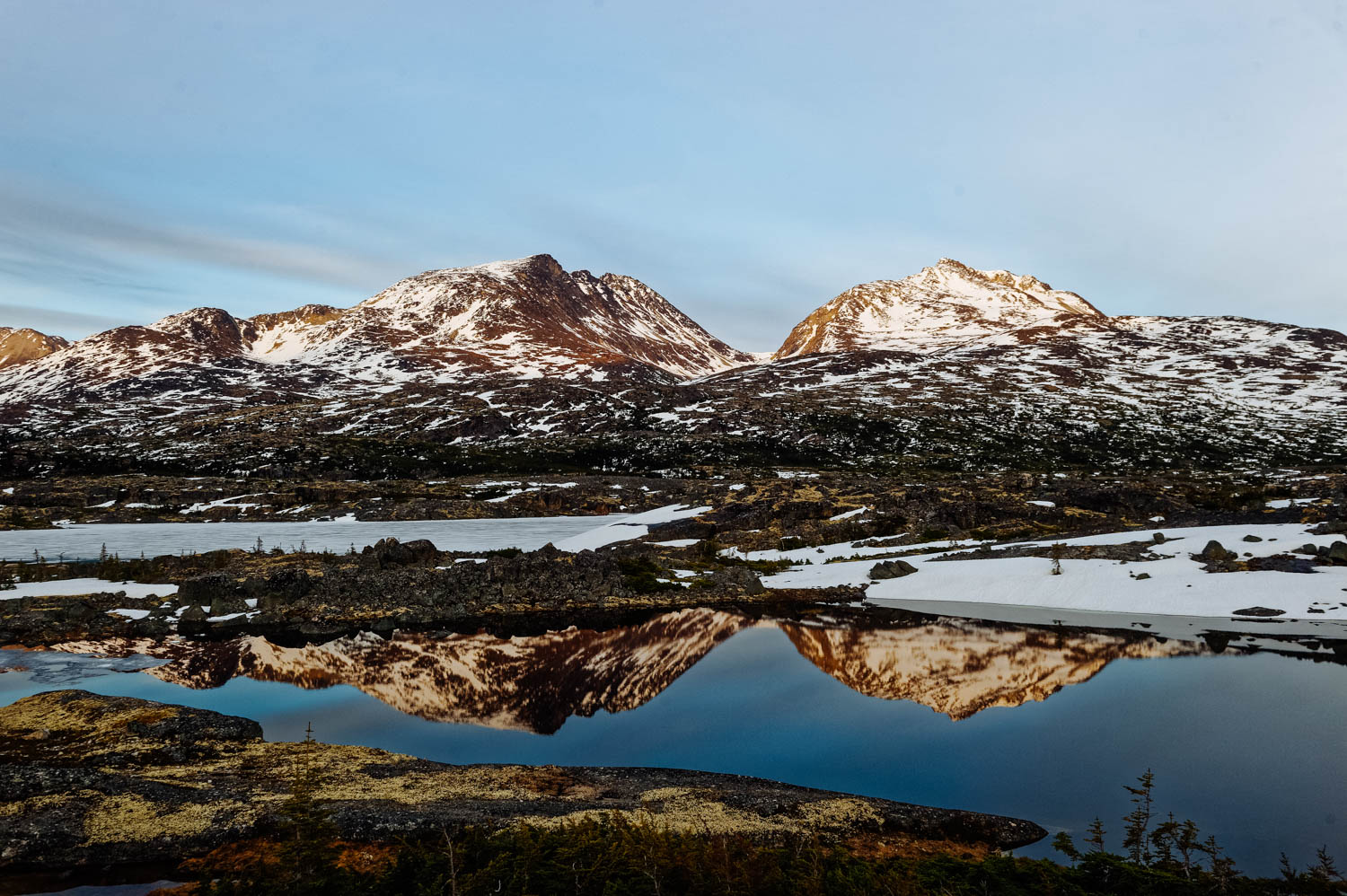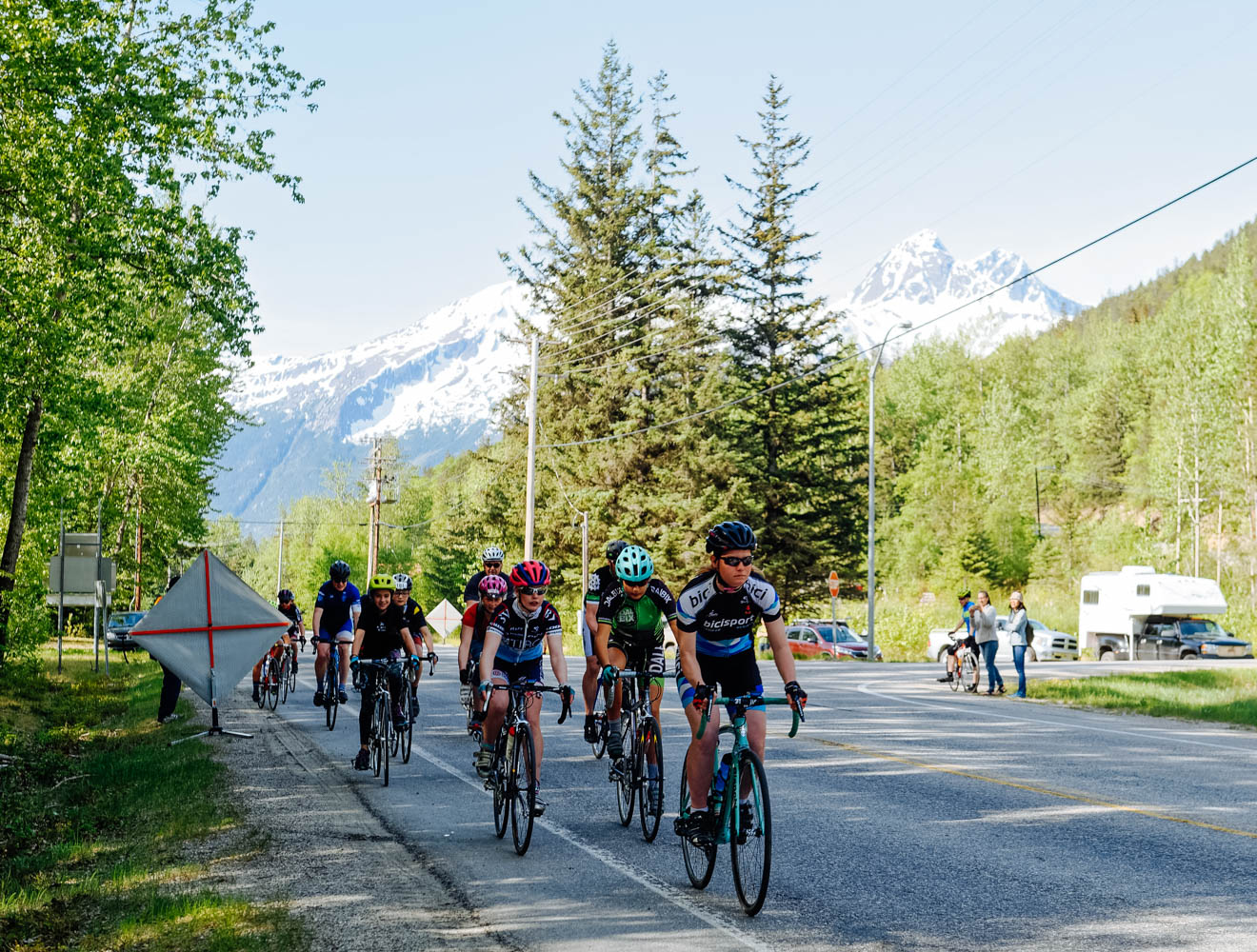Hiking to International Falls, between BC and Alaska
The International Falls hike starts near the White Pass Summit and is most often in the clouds. We lucked out on a rare bluebird day! The trail starts on the Canadian side of the border and crosses into Alaska, hence its name.
It’s a beautiful hike especially on a sunny day. Be warned that there is a pretty steep descent (with rope assist) at the beginning and a few creek crossing (hiking poles were useful, an extra pair of shoes/socks might be a good idea if the water level is high). You can find all the driving direction and hike info here.
The rest of the trail is an easy gradual climb along the falls and then you can hike as far as you want once you hit the alpine plateau. It’s so beautiful, you just want to keep going, but be mindful that you need to retrace your steps back to the car!
Note: Coming from Whitehorse, you need to cross the Canadian customs (don’t forget your passport or ID), but since the hike starts before the US customs, you don’t need to fill in the ArriveCan documents.

